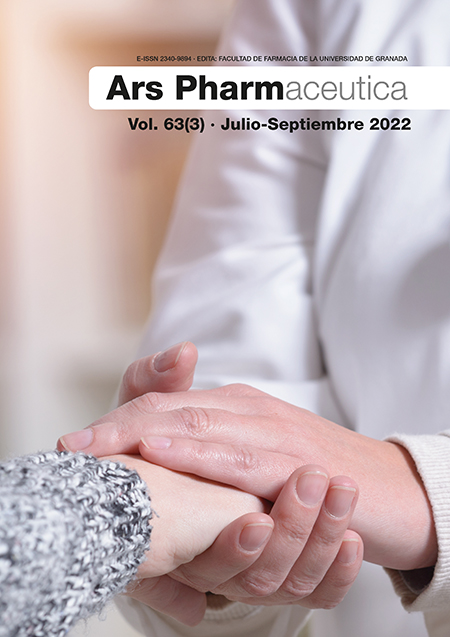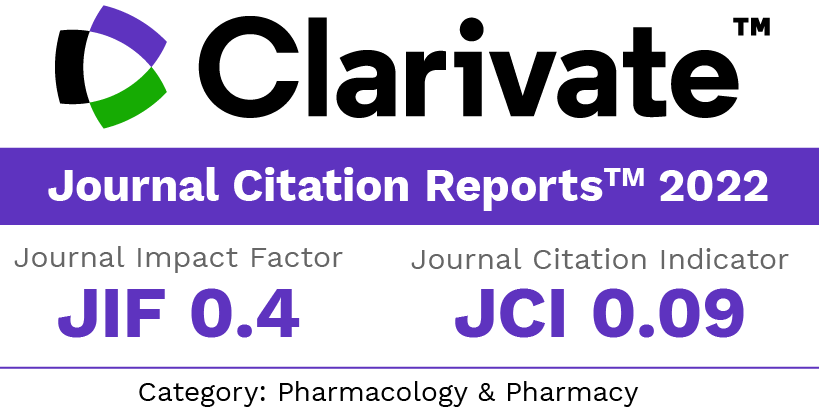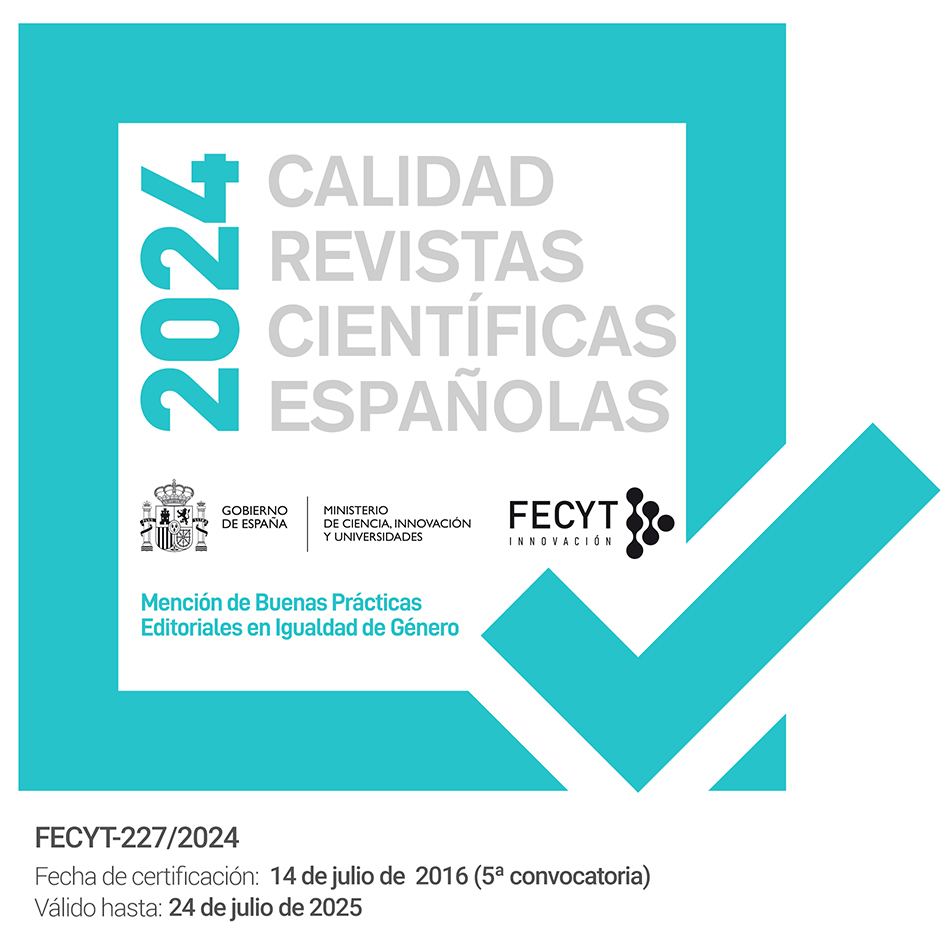Amphotericin B is usually underdosed in the treatment of experimental cutaneous leishmaniasis
DOI:
https://doi.org/10.30827/ars.v63i3.23894Keywords:
Leishmania amazonensis; amphotericin B; BALB/c; doseAbstract
Introduction: Amphotericin B is an effective drug for the treatment of the different clinical forms of leishmaniasis. However, there are reports of its ineffectiveness in animals experimentally infected with Leishmania spp. That is why, the objective of the present work was to evaluate the balance of activity-toxicity at amphotericin B doses over 1 mg/kg, so that its use as a positive control antileishmanial drug were adequate.
Method: BALB/c mice were experimentally infected with L. amazonensis and treated with amphotericin B by intraperitoneal route at doses from 5 mg/kg to 12.5 mg/kg, beginning 21 days after infection. The size of the lesions and the body weight of the mice were measured for eleven weeks after the commencement of treatment. The number of parasites was also determined three days after the end of treatment.
Results: Amphotericin B at 5 mg/kg retarded lesions growth but neither reduced lesion size nor the parasite load at lesion site. Doses of 7.5 mg/kg to 10 mg/kg, every 48 h for 14 days (7 doses) caused a significant reduction of lesion size and parasite load without evident loss of body weight and without signs of toxicity. Amphotericin B at 12.5 mg/kg was more effective but produced unacceptable toxicity.
Conclusions: The results support the use of amphotericin B as a positive control drug in BALB/c mice experimentally infected with L. amazonensis at doses of 7.5 mg/kg to 10 mg/kg to achieve an effect comparable to that observed in clinical practice.
Downloads
References
Stephens N, Rawlings B, Caffrey P. Streptomyces nodosus Host Strains Optimized for Polyene Glycosylation Engineering. Biosci Biotechnol Biochem. 2012;76(2):384–7. doi: 10.1271/bbb.110673.
Shirzadi, MR. Liposomal amphotericin B: a review of its properties, function, and use for treatment of cutaneous leishmaniasis. Res Rep Trop Med. 2019;10:11-8. doi: 10.2147/RRTM.S200218
Sabra R, Branch RA. Amphotericin B nephrotoxicity. Drug Saf. 1990;5(2):94-108. doi: 10.2165/00002018-199005020-00003.
Bekersky I, Boswell GW, Hiles R, Fielding RM, Buell D, Walsh TJ. Safety, toxicokinetics and tissue distribution of long-term intravenous liposomal amphotericin B (AmBisome®): a 91-day study in rats. Pharm Res. 2000;17(12):1494–502. doi:10.1023/A:1007605024942.
Santos CR, Tuon FF, Cieslinski J, de Souza RM, Imamura R, Amato VS. Comparative study on liposomal amphotericin B and other therapies in the treatment of mucosal leishmaniasis: A 15-year retrospective cohort study. PLoS One. 2019 Jun 26;14(6):e0218786. doi: 10.1371/journal.pone.0218786.
Sundar S, Singh, A. Chemotherapeutics of visceral leishmaniasis: present and future developments. Parasitol. 2018;145(4):481-9. doi:10.1017/S0031182017002116
Mistro S, Rodrigues M, Rosa L, Camargo M, Badaro R. Liposomal Amphotericin B drug access for the treatment of leishmaniasis in Brazil. Trop Med Int Health. 2016;21(6): 692-3. doi:10.1111/tmi.12697
Ghorbani M, Farhoudi R. Leishmaniasis in humans: drug or vaccine therapy? Drug Des Devel Ther. 2018;12:25-40. doi: 10.2147/DDDT.S146521.
Rocha V, Quintino C, Ferreira E et al. Antileishmanial Activity of Dimeric Flavonoids Isolated from Arrabidaea brachypoda. Molecules. 2019;24(1):1-13. doi: 10.3390/molecules24010001.
Van Bocxlaer K, Caridha D, Black C et al. Novel benzoxaborole, nitroimidazole and aminopyrazoles with activity against experimental cutaneous leishmaniasis. Int J Parasitol Drugs Drug Resist 2019; 11:129-38. doi: 10.1016/j.ijpddr.2019.02.002.
Trinconi C, Reimão J, Yokoyama-Yasunaka J, Miguel D, Uliana S. Combination Therapy with Tamoxifen and Amphotericin B in Experimental Cutaneous Leishmaniasis. Antimicrob Agents Chemother. 2014;58(5):2608-13. doi:10.1128/AAC.01315-13.
Sifontes-Rodríguez S, Monzote-Fidalgo L, Castañedo-Cancio N et al. The efficacy of 2-nitrovinylfuran derivatives against Leishmania in vitro and in vivo. Mem Inst Oswaldo Cruz. 2015;110(2):166-73. doi: 10.1590/0074-02760140324
Monzote L, Piñón A, Scull R, Setzer W. Chemistry and Leishmanicidal Activity of the Essential Oil from Artemisia absinthium from Cuba. Nat Prod Commun. 2014;9(12):1799-804.
Casa D, Scariot D, Khalil N, Nakamura C, Mainardes R. Bovine serum albumin nanoparticles containing amphotericin B were effective in treating murine cutaneous leishmaniasis and reduced the drug toxicity. Exp Parasitol. 2018;192:12-8. doi:10.1016/j.exppara.2018.07.003.
Reimão J, Trinconi C, Yokoyama-Yasunaka J, Miguel D, Kalil S, Uliana S. Parasite burden in Leishmania (Leishmania) amazonensis-infected mice: Validation of luciferase as a quantitative tool. J Microbiol Methods. 2013;93(2):95–101. doi:10.1016/j.mimet.2013.02.007.
Varikuti S, Oghumu S, Saljoughian N et al. Topical treatment with nanoliposomal Amphotericin B reduces early lesion growth but fails to induce cure in an experimental model of cutaneous leishmaniasis caused by Leishmania mexicana. Acta Trop. 2017;173:102–8. doi: 10.1016/j.actatropica.2017.06.004.
Nguyen A, Yang K, Bryant K et al. Microneedle-Based Delivery of Amphotericin B for Treatment of Cutaneous Leishmaniasis. Biomed Microdevices. 2019;21(8):1-10. doi: 10.1007/s10544-018-0355-8.
Committee for the Update of the Guide for the Care and Use of Laboratory Animals, Institute for Laboratory Animal Research. Guide for the care and use of laboratory animals. Eighth edition. The National Academies Press, Washington DC, 2011, 246 p.
NIH Office of Animal Care and Use. Animal Research Advisory Committee Guidelines: Guidelines for Endpoints in Animal Study Proposals. Approved by ARAC 10/09/96, Reapproved - 02/10/99, Last revision 04/24/19. Accessed 04/14/2022. https://oacu.oir.nih.gov/system/files/media/file/2021-02/b13_endpoints_guidelines.pdf
Titus RG, Marchand M, Boon T, Louis JA. A limiting dilution assay for quantifying Leishmania major in tissues of infected mice. Paras Immunol. 1985;7(5): 545-55. doi: 10.1111/j.1365-3024.1985.tb00098.x
OECD, Test No. 423: Acute Oral toxicity - Acute Toxic Class Method, OECD Guidelines for the Testing of Chemicals, Section 4, OECD Publishing, Paris; 2002, 14 p. doi: 10.1787/9789264071001-en.
Rugani J, Quaresma P, Gontijo C, Soares R, Monte-Neto R. Intraspecies susceptibility of Leishmania (Viannia) braziliensis to antileishmanial drugs: Antimony resistance in human isolates from atypical lesions. Biomed Pharmacother. 2018;108:1170–80. doi: 10.1016/j.biopha.2018.09.149.
Basile G, Cristofaro G, Locatello L et al. Refractory mucocutaneous leishmaniasis resolved with combination treatment based on intravenous pentamidine, oral azole, aerosolized liposomal amphotericin B and intralesional meglumine antimoniate. Int J Infect Dis. 2020;97:204-7. doi: 10.1016/j.ijid.2020.06.003.
Ayres D, Fedele T, Marcucci M, Giorgio S. Potential utility of hiperbaric oxygen therapy and propolis in enhancing the leishmanicidal activity of glucantime. Rev Inst Med Trop Sao Paulo. 2011;53(6):329-34. doi: 10.1590/s0036-46652011000600006.
Reagan-Shaw S, Nihal M, Ahmad N. Dose translation from animal to human studies revisited. FASEB J 2008;22(3):659-61. doi: 10.1096/fj.07-9574LSF
Serrano-Martín X, Payares G, De Lucca M, Martinez J, Mendoza-León A, Benaim G. Amiodarone and miltefosine act synergistically against Leishmania mexicana and can induce parasitological cure in a murine model of cutaneous leishmaniasis. Antimicrob Agents Chemother. 2009;53(12):5108-13. doi: 10.1128/AAC.00505-09.
Souza-Silva F, Cabral-Bourguignon S, Acácio B et al. Epoxy-α-lapachone has in vitro and in vivo anti-leishmania (Leishmania) amazonensis effects and inhibits serine proteinase activity in this parasite. Antimicrob Agents Chemother. 2015;59(4):1910-18. doi: 10.1128/AAC.04742-14.
Coutinho S, Pirmez C, Da-Cruz A. Parasitological and immunological follow-up of American tegumentary leishmaniasis patients. Trans R Soc Trop Med Hyg. 2002;96(1):173-8. doi: 10.1016/s0035-9203(02)90072-6.
Gabriel A, Valério-Bolas A, Palma-Marques J et al. Cutaneous Leishmaniasis: The Complexity of Host’s Effective Immune Response against a Polymorphic Parasitic Disease. J Immunol Res. 2019;(2603730). doi: 10.1155/2019/2603730.
Published
How to Cite
Issue
Section
License
Copyright (c) 2022 Sergio Sifontes Rodríguez

This work is licensed under a Creative Commons Attribution-NonCommercial-ShareAlike 4.0 International License.
The articles, which are published in this journal, are subject to the following terms in relation to the rights of patrimonial or exploitation:
- The authors will keep their copyright and guarantee to the journal the right of first publication of their work, which will be distributed with a Creative Commons BY-NC-SA 4.0 license that allows third parties to reuse the work whenever its author, quote the original source and do not make commercial use of it.
b. The authors may adopt other non-exclusive licensing agreements for the distribution of the published version of the work (e.g., deposit it in an institutional telematic file or publish it in a monographic volume) provided that the original source of its publication is indicated.
c. Authors are allowed and advised to disseminate their work through the Internet (e.g. in institutional repositories or on their website) before and during the submission process, which can produce interesting exchanges and increase citations of the published work. (See The effect of open access).























